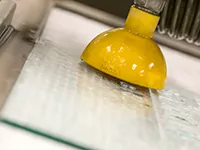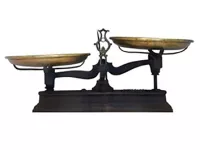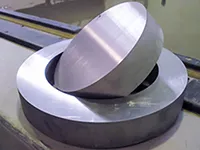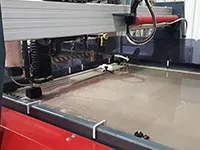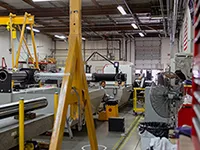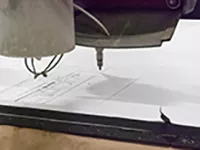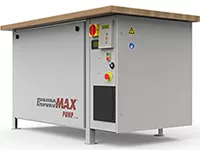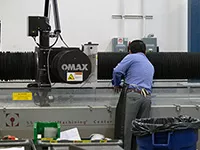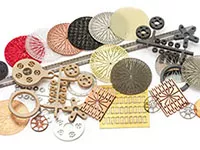Tips & Tricks
Cutting Glass on a Waterjet Machine
Although most glass should cut well on your waterjet, you will need to make exceptions, as different kinds of glass behave differently. For example, piercing is an easy but challenging part of waterjet glass cutting. In addition, frosting and chipping may occur around cut edges. Read
Dear current and future OMAX customers
A letter from Gordon Rice on the future of OMAX and Hypertherm. Read
Downside of Buying a Cheap Waterjet
The adage “You get what you pay for” applies to most major purchases. You pay more for a high-end car or a house with a proven history of appreciating well. The adage is even truer for machine tools. When you invest in a well-made tool, you can expect years of accurate and repeatable use. Read
Working with Titanium on a Waterjet
Titanium is harder, but also lighter, than both aluminum and steel. If you have ever machined titanium on a mill, you know it has a tendency to be a very slow cut. However, with an abrasive waterjet, cutting titanium is fast and easy.Here is a basic guide to working with titanium on a waterjet: Read
Is Your Water Smelling … Pungent?
When you don’t use your abrasive waterjet for an extended period of time, you may notice that the stagnant water may start to produce an odor. What do you do about it? We’ll discuss this in a minute, but first let us note that OMAX does not recommend putting any chemicals into your tank. Read
Complementary Machining - Part 3
OMAX abrasive waterjets are the Swiss Army Knives of the machine tool world. Abrasive waterjet can: cut with a small kerf like a saw, cut external geometry for near net production, cut round parts like a lathe, cut square parts like a mill, cut complex parts like a wire EDM, and cut slots like a broach. Read
Complementary Machining - Part 2
With IntelliMAX, OMAX offers an easy-to-use alternative. From the hobbyist to a precision CNC machinist, IntelliMAX has proven that a powerful machine tool controller can be intuitive. Read
Save Money with OMAX Direct-Drive Pumps
One aspect that makes OMAX waterjets so “green” is the OMAX lines of direct-drive pumps. These pumps don’t use hyrdaulic oil, so there is no need for costly chemical disposal when conducting maintenance. Also, the water and power consumption of a direct-drive pump is significantly less than other types of waterjet pumps. Read
Complementary Machining - Part 1
At the OMAX Corporation’s facility in Kent, Washington, we have a waterjet center that produces parts use in manufacturing our waterjets. The waterjet cell has produced and maintained over three-hundred-thousand 1.5” thick, heat-treated, 4340 steel motor plates all within 0.005” tolerance. This tolerance is straight off the waterjet without any secondary machining. Read
The Versatility of OMAX Abrasive Waterjets
Innovation changes how and what we machine. On top of that, industry trends fluctuate with market prices of imported or locally sourced materials. If the price of steel wavers, how will your company react? When the needs of the customers change, how will your machine shop adapt? Read

